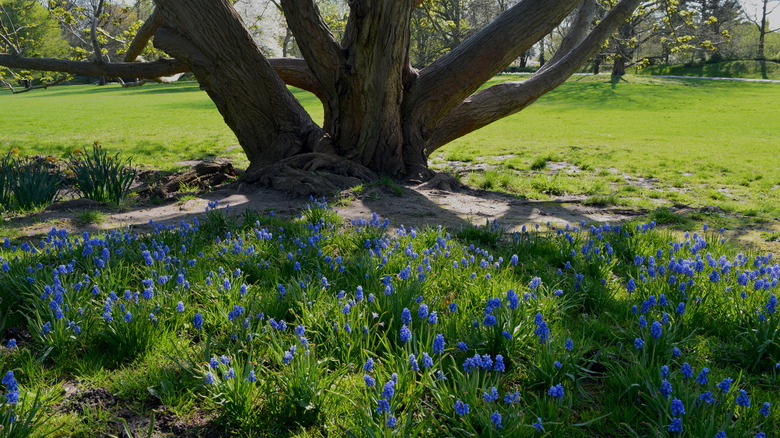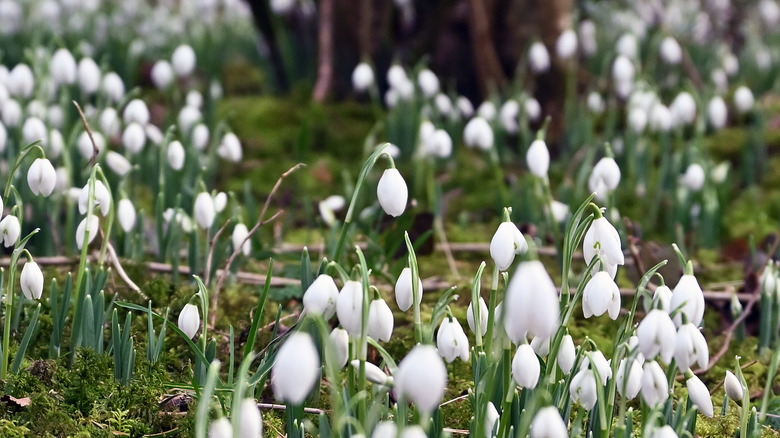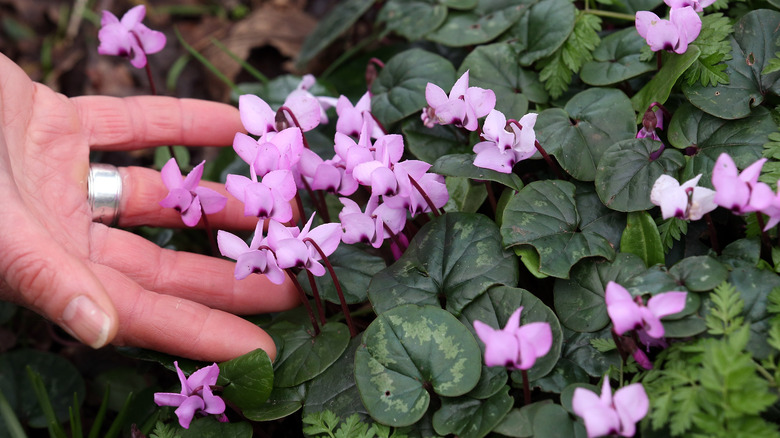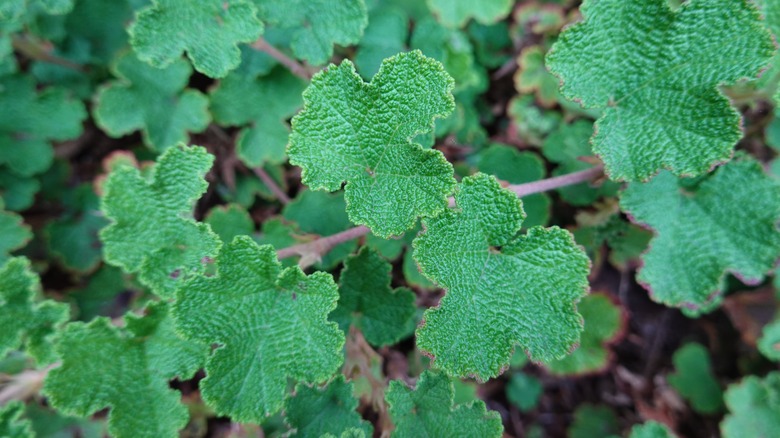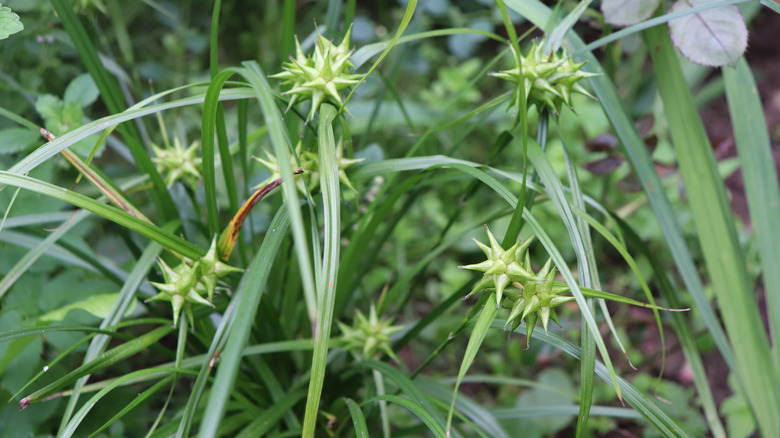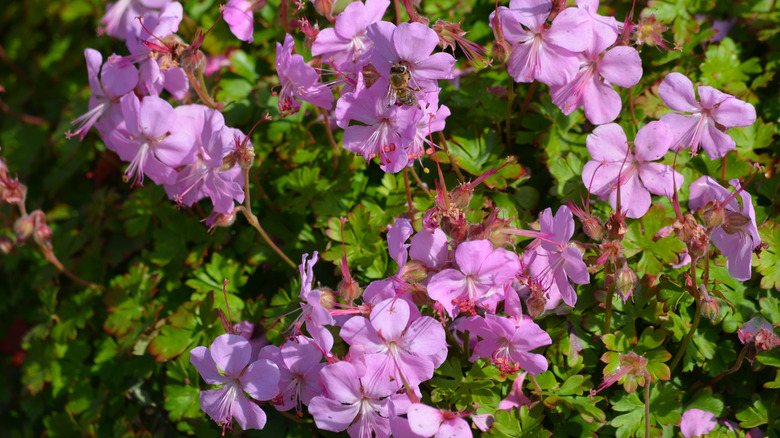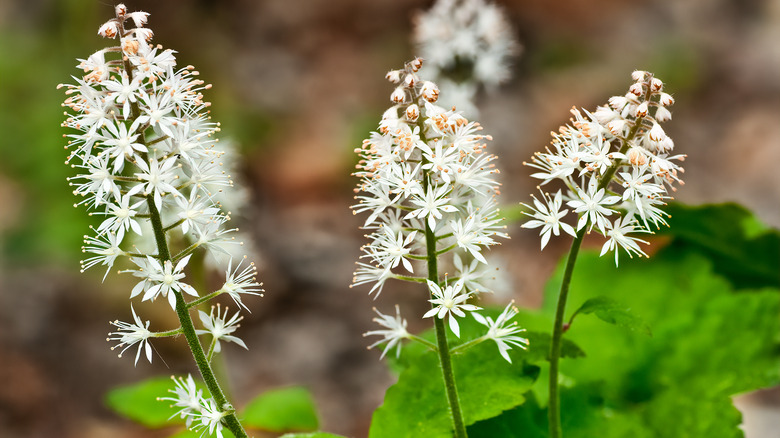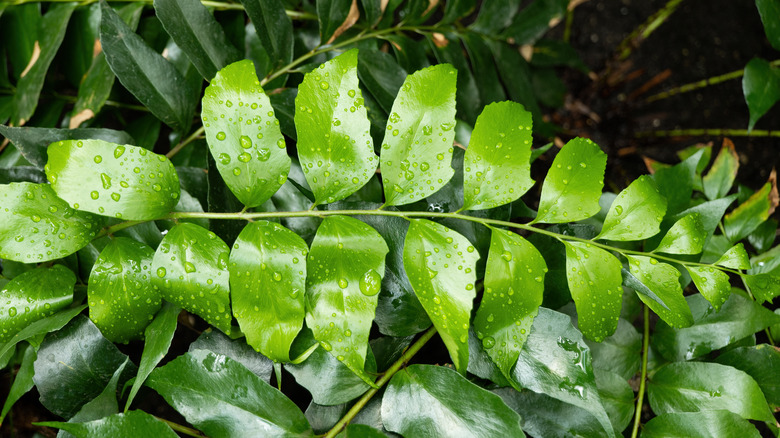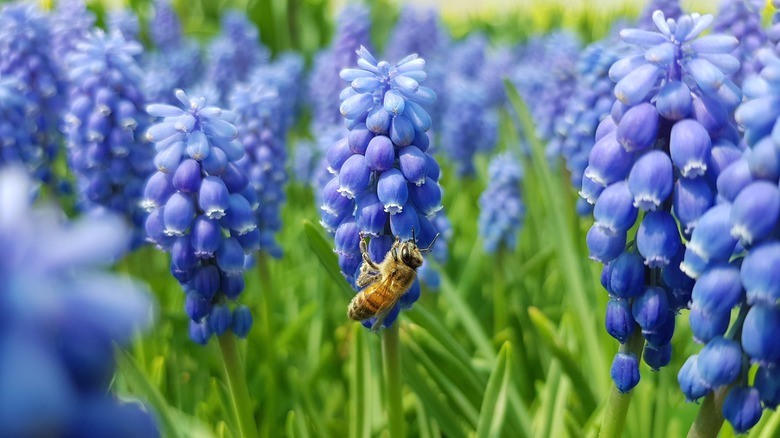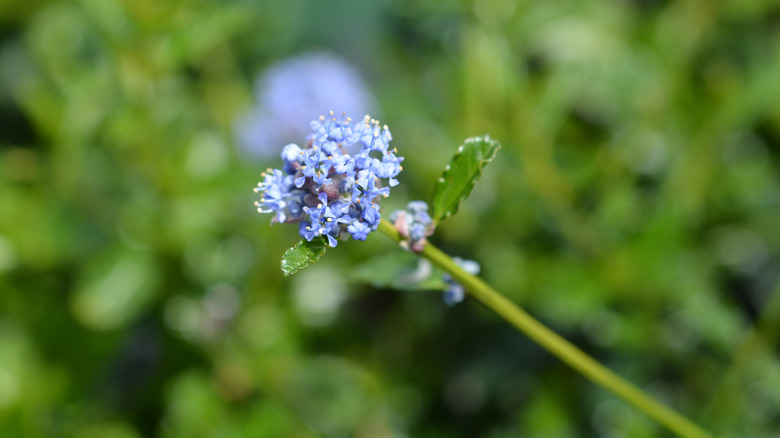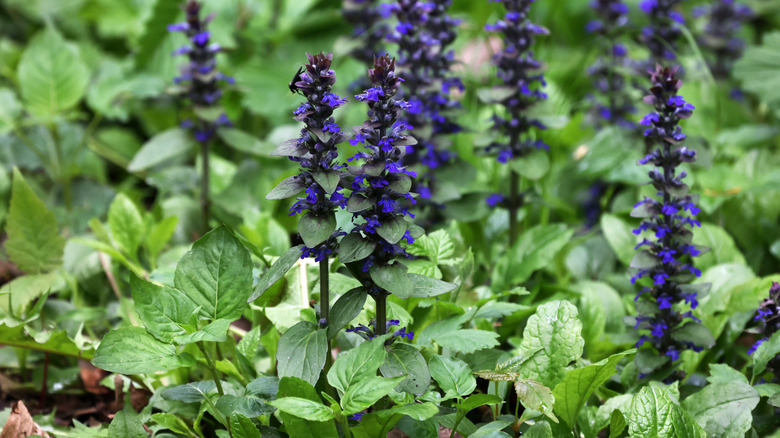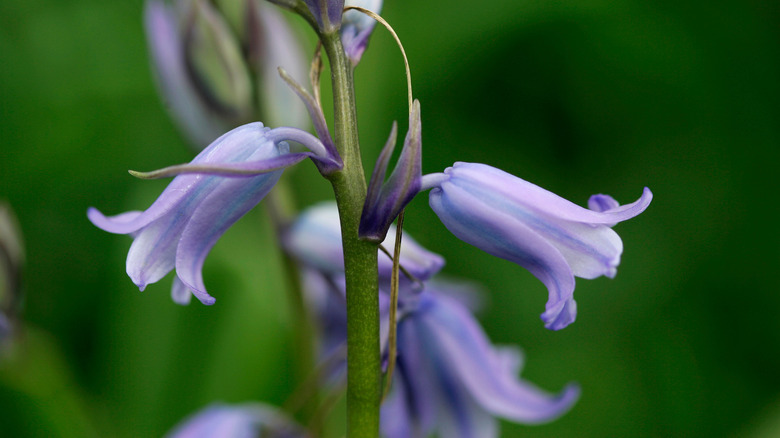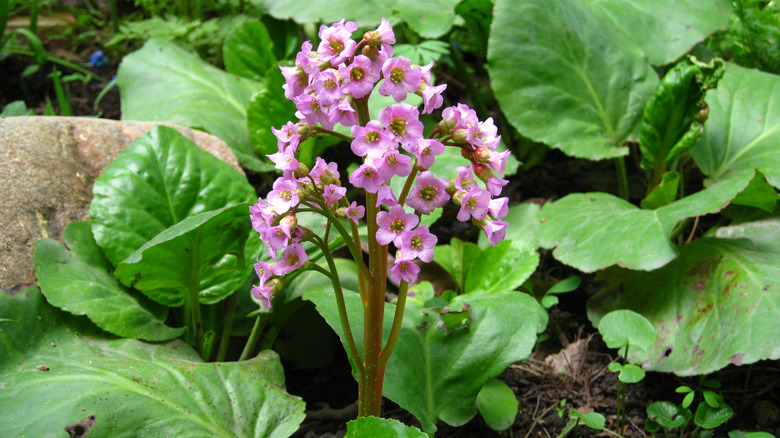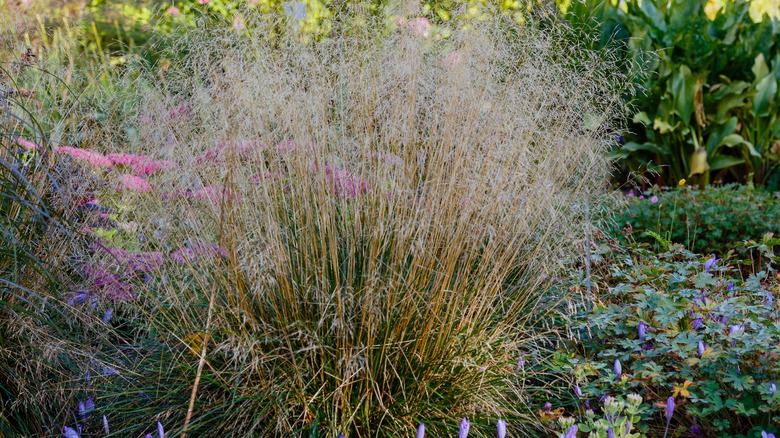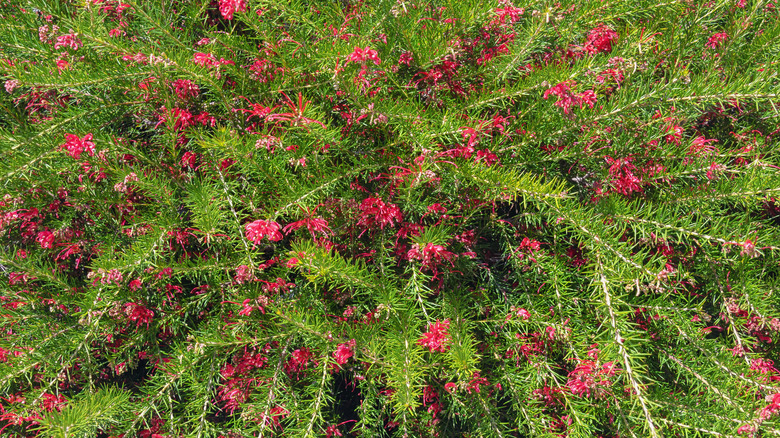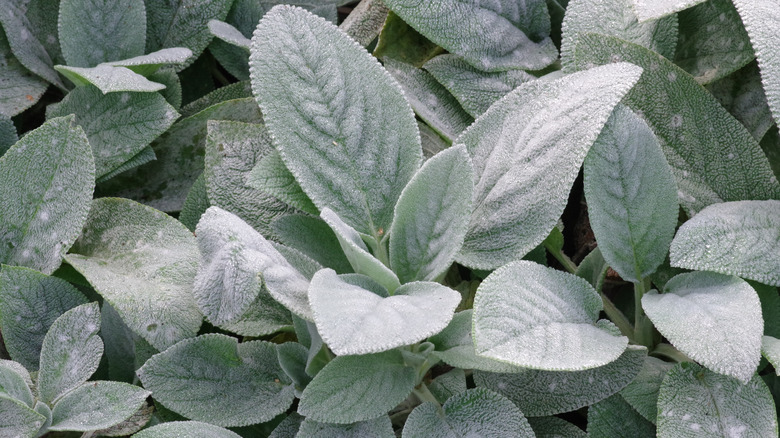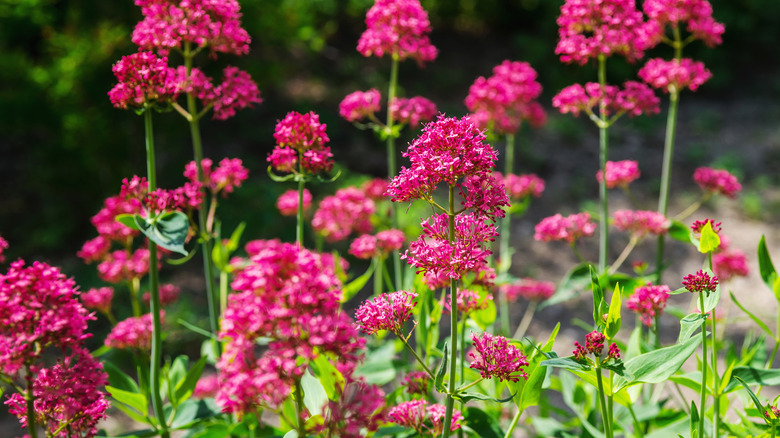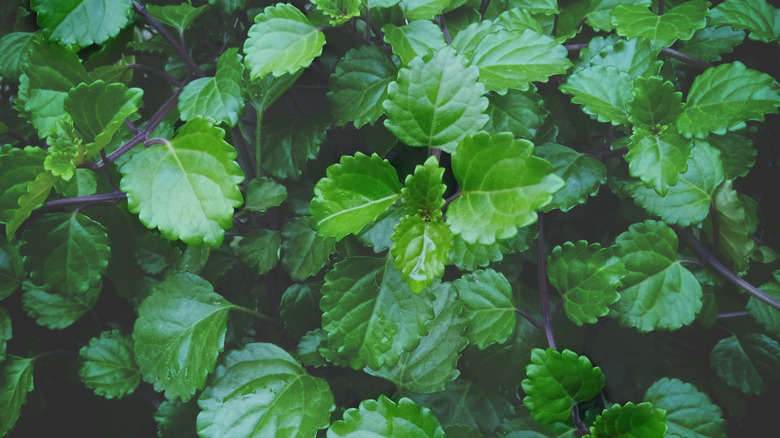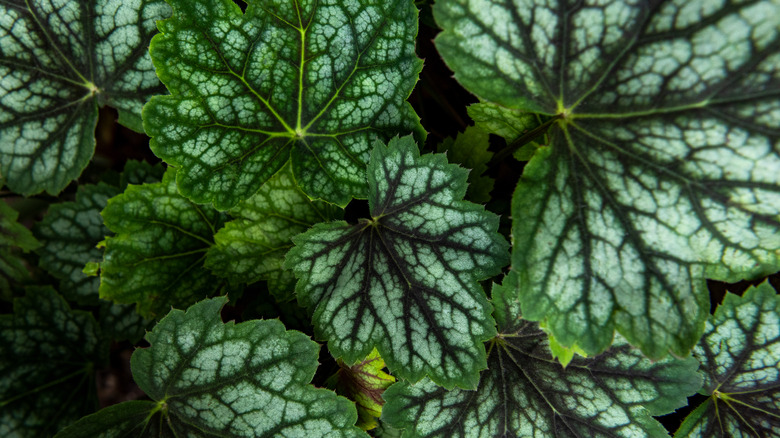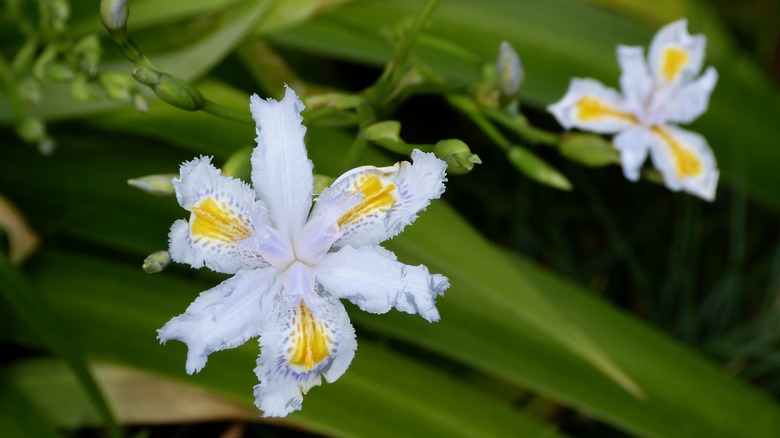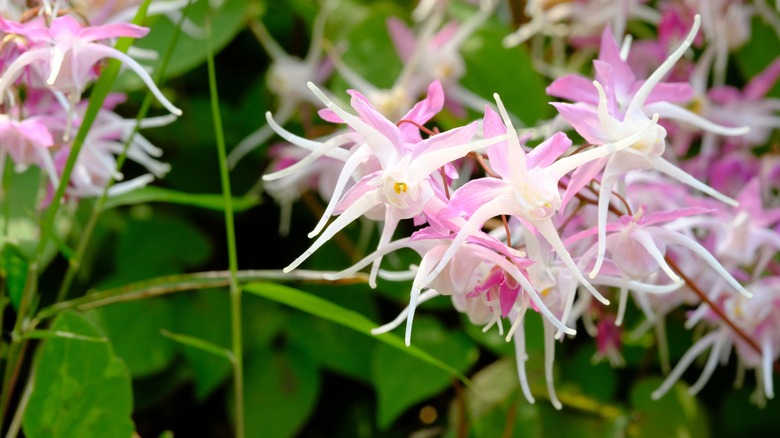20 Plants That Can Grow Under Deciduous Trees With Thick Roots
A large tree in your yard can have numerous benefits. Trees slow soil erosion, water runoff, and noise pollution, while also creating necessary shade and a habitat for local species of wildlife. However, despite all these great advantages, mature trees with widely spreading and thick roots can be an eyesore. Most plants have a hard time growing directly under trees as they compete for moisture, nutrients, and space. Often, trees come out on top due to their strong root system and large size.
Still, it isn't impossible to find small specimens that will comfortably grow in the patches of soil that go unused by mature deciduous trees. In fact, we found 20 distinct species that wiggle their shallow roots into these tight spots and thrive without access to a lot of space or water. Remember that tall-growing plants and flowers are not equipped to grow here, almost all of your options are bulbs, ground cover plants, and other small growths in 4-inch pots. Trying to grow something bigger than this will create more issues, including the death of your tree in some instances. With much less effort than you think, we can successfully bring the soil beneath our trees back to life with some incredible options, which we've collected here.
1. Snowdrops
Spring-blooming snowdrop flowers (Galanthus spp.) are grown from bulbs that easily fit between thick tree roots. They are hardy perennials that can grow in almost any U.S. state without consequence. In addition to deciduous trees, the white flowers may also be planted beneath shrubs and hedges, or as a border along a pathway.
Bloom Season: Winter to spring
USDA Growing Zone: 3 to 8
Growing Conditions: Full sun
Soil Type: Rich and well-draining
Size: Up to 10 inches tall
2. Eastern sowbread
Another flower grown from bulbs, the Eastern sowbread (Cyclamen coum) grows nicely beneath trees that lose their leaves in the winter. The short-growing flowers have an affinity for slightly shady and protected areas that offer some acidity in their soil. They can be planted alongside other small flowers or even with one or more of the other 22 Cyclamen species.
Bloom Season: Fall to spring
USDA Growing Zone: 4 to 11
Growing Conditions: Dappled sunlight to partial shade
Soil Type: Slightly acidic and well-draining
Size: 4 to 12 inches tall and 8 to 12 inches wide
3. Creeping raspberry
Creeping raspberries (Rubus pentabulous), which are also known as orangeberries, are a type of groundcover that can grow in places that many others cannot. They are tolerant of drought, flooding, damaging winds, and poor soil. A densely foliated species, they grow and spread quite quickly. Keep in mind that this mat-forming perennial may produce berries in the summer, although it does not do so consistently.
Bloom Season: Spring
USDA Growing Zone: 6 to 10
Growing Conditions: Full sun to partial shade
Soil Type: Well-draining
Size: Up to 3 feet tall
4. Berkeley sedge
Even though Berkeley sedge (Carex divulsa) is a widely known groundcover plant in California, it is actually used in landscaping across the United States. The hardy sedge can withstand low winter temperatures, and it is extremely adaptable. Like creeping raspberry plants, Berkeley sedge tolerates a multitude of soil types, light levels, and watering schedules. It will thrive under most deciduous trees and can be mowed once it's established.
Bloom Season: Spring and summer
USDA Growing Zone: 4 to 9
Growing Conditions: Full sun to partial shade
Soil Type: Well-draining
Size: 1 to 3 feet tall and wide
5. Cranesbill
Cranesbill (Geranium x Cantabrigiense 'Biokovo'), also known as hardy geranium, is a low-maintenance groundcover plant that produces wonderful spring blooms. It easily handles the lack of consistent moisture, nutrients, and sun that deciduous trees create. The plant's long trailing stems and shallow root system allow cranesbill to creep over exposed tree roots without suffocating them.
Bloom Season: Spring
USDA Growing Zone: 5 to 8
Growing Conditions: Full sun to partial shade
Soil Type: Evenly moist and well-draining
Size: 6 to 12 inches tall and wide
6. Foam flower
Native to eastern North America, the foam flower (Tiarella cordifolia) performs best under large trees that provide it with the shade it needs. Compared to other flowers in this collection, the Tiarella species needs more moisture to thrive, so you'll need to water them often. Depending on where you live, the plant may be evergreen. Mild winters are favored by the foam flower, but not required.
Bloom Season: Spring
USDA Growing Zone: 4 to 9
Growing Conditions: Partial to full shade
Soil Type: Well-draining
Size: 9 to 12 inches tall and 12 to 24 inches wide
7. Japanese holly fern
Japanese holly ferns (Cyrtomium falcatum) are non-flowering shade plants that grow best in warm areas. The leaves of the plant are somewhat similar-looking to true holly; however, the fern is not a member of the holly family. Instead, it hails from the shield fern family, Dryopteridaceae, which is known for its many tropical and warm-weather ferns.
USDA Growing Zone: 6 to 10
Growing Conditions: Partial to full shade
Soil Type: Moist, humusy, and well-draining
Size: 1 to 2 feet tall and 2 to 3 feet wide
8. Grape hyacinth
Grape hyacinth (Muscari spp.) may be one of the most well-known plants on this list. Its clusters of round blue to purple blooms are eye-catching, and they even have a pleasant scent if you get close enough. Grown from perennial bulbs, grape hyacinths are a reliable option for planting beneath deciduous trees with thick roots as they only need to be planted a few inches deep.
Bloom Season: Spring
USDA Growing Zone: 3 to 9
Growing Conditions: Full sun to partial shade
Soil Type: Well-draining
Size: 4 to 12 inches tall
9. Creeping blueblossom
Creeping blueblossom (Ceanothus thyrsiflorus var. thyrsiflorus) is a variety of blueblossom that grows close to the ground but spreads widely. Plant it beneath a mature tree, but make sure to leave plenty of room between the base of the tree trunk and the plant. The shrub will establish itself away from the exposed roots and encourage its foliage and flowers to fill the bare area.
Bloom Season: Winter to spring
USDA Growing Zone: 5 to 9
Growing Conditions: Full sun to shade
Soil Type: Well-draining
Size: 2 to 3 feet tall and 6 to 10 feet wide
10. Carpet bugle
Carpet bugle (Ajuga reptans) is a well-loved flowering plant in places with colder weather. It produces clusters of blue, purple, or white flowers on upright stems that look similar to grape hyacinths at first glance. This groundcover is adaptable to all kinds of conditions and tolerates a range of common problems for plants, including deep shade, foot traffic, and browsing animals.
Bloom Season: Spring to summer
USDA Growing Zone: 3 to 10
Growing Conditions: Full sun to deep shade
Soil Type: Moist, humus-rich, and well-draining
Size: 1 foot tall and 2 feet wide
11. Spanish bluebell
Spanish bluebells (Hyacinthoides hispanica) are a great option for woodland gardens that feature deciduous trees, flowering shrubs, and naturalized plants. Grown from bulbs, they perform best in some shade and sunlight with soil that is not too moist. Normally, you can plant these and forget about them for some time. They will multiply through self-seeding and offsets over the years if their needs are met.
Bloom Season: Spring
USDA Growing Zone: 3 to 8
Growing Conditions: Full sun to partial shade
Soil Type: Sandy and well-draining
Size: 9 to 18 inches tall and wide
12. Bergenia
Bergenia (Bergenia crassifolia), which is often referred to as pigsqueak and leather bergenia, is another short-growing but widely-spreading plant. Native to Northeastern Asia, the blooming perennial needs mild weather conditions to survive. Grown in the right location, bergenia will need little attention besides some occasional watering and pruning.
Bloom Season: Spring
USDA Growing Zone: 4 to 8
Growing Conditions: Partial shade to deep shade
Soil Type: Rich, moist, and well-draining
Size: Up to 18 inches tall and 1 foot wide
13. Tufted hairgrass
Tufted hairgrass (Deschampsia cespitosa) is an ornamental grass that is usually planted in shade gardens beneath larger plants or intermixed with ferns and flowers. It is among the only grass plants that can grow outside of bright direct sunlight. In the summer, when it's exposed to more sunshine, tufted hairgrass sends up flower stalks just above its foliage. The blooms can be purple, silver, and gold but their tiny nature makes them blend together.
Bloom Season: Summer
USDA Growing Zone: 4 to 8
Growing Conditions: Partial shade
Soil Type: Well-draining
Size: 1 to 3 feet tall
14. Spider flower
Native to Australia, spider flowers (Grevillea spp.) must be grown in warm areas where temperatures never dip below 20 degrees Fahrenheit. Despite this, the plant is very resilient and grows well in some shade with little water. It's also tolerant of foot traffic, aggressive weeds, and browsing deer or rabbits. As a bonus, spider flowers are loved by pollinators like hummingbirds and bees.
Bloom Season: Spring to fall
USDA Growing Zone: 8 to 10
Growing Conditions: Full sun to partial shade
Soil Type: Well-draining
Size: Up to 1 foot tall and 15 feet wide
15. Lambs' ears
The Lambs' ears plant (Stachys byzantina) is a member of the mint family. And, like other mint relatives, it is easy to grow, drought tolerant, and spreads rapidly. Gardeners particularly like lambs' ears for their silver velvety foliage and ability to grow in unfavorable conditions. The herbaceous perennial can be planted almost anywhere, however, it doesn't enjoy humid climates that offer it too much moisture.
Bloom Season: Spring to mid-summer
USDA Growing Zone: 4 to 8
Growing Conditions: Full sun
Soil Type: Dry and well-draining
Size: 9 to 18 inches tall and 12 to 18 inches wide
16. Red valerian
Red valerian (Centranthus ruber), also known as Jupiter's beard, is nicely compact when it's planted in poor soil under a deciduous tree. The plant can be identified by its pink and red blooms in the spring and its lance-shaped leaves on many stems. At maturity, the plant has a bush-like habit, but it is still effective as an erosion-controlling groundcover plant.
Bloom Season: Spring
USDA Growing Zone: 5 to 8
Growing Conditions: Full sun to partial shade
Soil Type: Sandy and well-draining
Size: 1 to 3 feet tall and 1 to 2 feet wide
17. Yerba buena
The shade-loving perennial herb, yerba buena (Micromeria douglasii), is an edible plant that doubles as an attractive mass planting under large trees. Both its leaves and flowers are delightfully fragrant, and its bloom time extends from the end of spring until the beginning of fall. Sadly for our cool-weather friends, yerba buena can only be grown in the more temperate parts of the United States.
Bloom Season: Spring to fall
USDA Growing Zone: 7 to 10
Growing Conditions: Partial to deep shade
Soil Type: Well-draining
Size: 3 to 7 inches tall and 24 to 36 inches wide
18. Island alumroot
A relative of bergenia, the island alumroot plant (Heuchera maxima) enjoys growing in partially shaded locations near the coast. With evergreen foliage and early-blooming flowers, it is an attractive addition to any garden begging for more color. You should keep in mind, however, that it does not survive cold winters with temperatures dropping below 10 degrees Fahrenheit.
Bloom Season: Winter to spring
USDA Growing Zone: 4 to 9
Growing Conditions: Partial shade
Soil Type: Sandy or rocky and well-draining
Size: 1 foot tall and 1 to 2 feet wide
19. Bamboo iris
Bamboo irises (Iris confusa) are known for their thick bamboo-like stems, narrow foliage, and multicolored blossoms. Grown from bulbs, it's easy to tuck them between thick roots beneath trees. Here, they thrive under the canopy of leaves that offer shade from the summer heat. Be aware, though, that in the fall, bamboo irises do require deadheading and pruning to stay healthy.
Bloom Season: Spring to summer
USDA Growing Zone: 9 to 10
Growing Conditions: Full sun to partial shade
Soil Type: Sand or clay and well-draining
Size: 3 to 5 feet tall and wide
20. Barrenwort
Barrenwort (Epimedium spp.) is a drought-tolerant and shade-loving perennial that grows well under trees. Even though the common name isn't attractive, this plant is sought-after for its unique flowers and colorful foliage. Though all its species are quite similar, the genus is host to many varieties of barrenwort, which grow to different sizes, bear separate flower colors, and offer distinct bloom seasons.
Bloom Season: Spring to summer
USDA Growing Zone: 5 to 8
Growing Conditions: Partial to deep shade
Soil Type: Fertile and well-draining
Size: 8 to 10 inches tall and 12 to 18 inches wide
